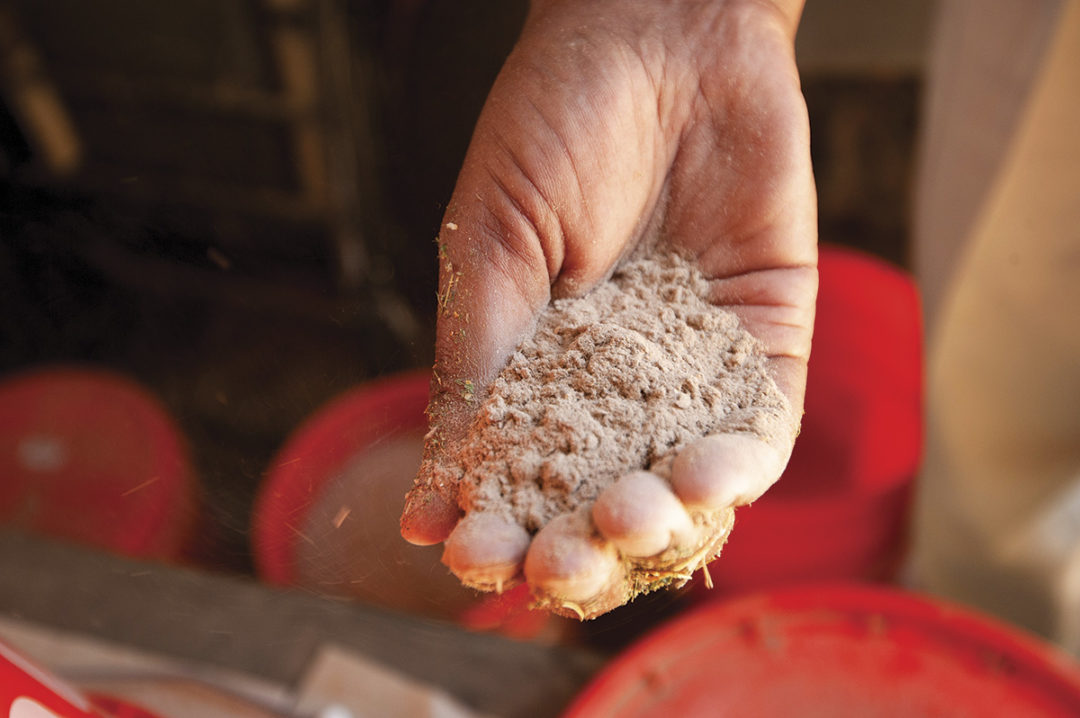In the U.S., agricultural greenhouse gas emissions were about 9.9% of the nation’s total emissions, according to the 2022 report by the EPA. Methane emissions from enteric fermentation and manure management represent 26.9% and 9.2%, respectively, of total methane emissions from anthropogenic activities in the nation. Beef cattle remain the largest contributor of methane emissions from enteric fermentation, accounting for 72% in 2020, according to the EPA’s annual report. Although emissions generally follow trends in cattle populations, over the long term, emission intensity (emissions per pound of meat) is decreasing.
It is clear that methane emissions from the livestock sector need to be reduced and eventually reach net zero. In fact, the U.S. Roundtable for Sustainable Beef (USRSB) has set a target of achieving climate neutrality by 2040 from the U.S. beef supply chain. What is less clear is how that target can be achieved with existing and novel technologies. For the cow-calf sector, one of the most promising ways to reduce emissions is through soil carbon sequestration. Soil carbon sequestration involves carbon capture through plant photosynthesis and keeping those soil carbon pools protected from microbial activity that will release the carbon back to the air. There are agricultural management practices that show promise for restoring soils and sequestering carbon, including increasing root biomass or creating highly diverse crop rotations. However, there is still controversy as to how much soil carbon can be sequestered; this topic will continue to be debated as we increase our understanding of soil dynamics. The key is continuous monitoring of soil carbon pools, which will indicate whether a certain management strategy is effective. Another way to reduce emissions from the cow-calf sector is to increase forage digestibility through various ways from breeding to using fibrolytic enzymes. However, some beef production systems fill the unique niche of consuming high-fiber, low-digestible feeds and co-products not suitable for highly productive animals.
USRSB expects the feedyard sector to reduce greenhouse gas emissions by 10% per pound of beef by 2030. There are several feed additives already in use or being developed that have the potential to reduce methane emissions. For example, monensin has been shown to reduce methane emissions by about 10% from beef cattle. An additive that received approval from the European Union and other countries, Bovaer, has been shown to reduce by 30%, although decreases of 80% or greater have been obtained in some studies with high-concentrate diets in feedlot steers. The additive is awaiting approval by the FDA. Studies in the U.S. and Australia have shown that adding a small amount of a particular red seaweed (Asparagopsis taxiformis) reduced methane emissions by up to 98%, while increasing average daily gain (ADG) and feed conversion ratio.
Brominata, a formulation containing seaweed, recently received a “no objections letter” from the California Department of Food and Agriculture for its independent claim to be generally recognized as safe (GRAS) and allowed to be sold in the state. However, it needs to be scaled up to meet demand and may need FDA approval to claim methane mitigation potential. In other countries, such as Australia, such approval is not required, and Brominata is expected to enter the market in 2023. Similar solutions that are based on the active ingredient of seaweed are in development in the U.S. and Australia, and may provide options for substantially reducing methane emissions in the near future.
A recent quantitative analysis found that the inclusion of organic (fumarate, malate, etc.) and inorganic (nitrate, sulfate, etc.) electron acceptors decreased total methane by 17% and methane intensity for ADG by 12%, as well as causing a 3% decrease in dry matter intake (DMI) without affecting animal production. Nitrate feeding to animals is not approved in North America, but carbon credits can be obtained by feeding nitrate to beef in Australia.
Essential oils (complex mixtures of volatile secondary metabolites), when extracted and concentrated or chemically synthesized, may exert antimicrobial activities against bacteria and fungi. Although essential oils such as oregano, thyme, garlic oil and its derivatives have been shown to decrease methane production in the lab, results from in vivo studies have been far less conclusive. Mootral, a feed additive based on garlic and citrus extract, has been shown to reduce methane emissions by 23% after 12 weeks of supplementation. Further work is needed to verify results. A 9% decrease in methane production in long-term studies was reported in a quantitative analysis for a mixture of coriander, eugenol, geranyl acetate and geraniol (Agolin Ruminant; Agolin SA, Bière, Switzerland) when fed to dairy cows at the rate of 1 gram per day. It is expected to offer similar benefits to beef cattle. Large-scale trials are currently underway in California to determine its effectiveness under commercial farm conditions.
Once the technologies discussed above are on the market, various incentives exist to promote their wide adoption by producers. Carbon credits can be collected through the use of a verified carbon standard protocol on methodology for the reduction of enteric methane emissions from ruminants through the use of feed ingredients. Another option is creating a premium for low-emission products at the point of sale by retailers.
The pressure to reduce methane emissions from the livestock industry will continue. In the next two to five years, several feed additives will be available that can be used to reduce methane emissions substantially. However, these additives need to be adapted for use in pasture-based production systems, which might take a further year or two. In conclusion, the target set by USRSB is achievable through a combination of traditional and novel methane mitigation approaches.











